When someone asks me “tell me some risk-free investment which can generate good returns” or “low-risk high return mutual funds” – I get confused. Why? Because according to me there is n number of risks in investing & I am not sure which risks he is talking about. Warren Buffett Said “Risks come from not knowing what you are doing” so today let’s risk ourselves to understand different types of risk that are associated with equity & debt investments.
What is Risk?
What comes to your mind when someone says RISK or this investment is risky? Risk for most of the people has only one meaning losing the principal amount. In scientific language “Risk may be taken as downside risk, the difference between the actual return and the expected return (when the actual return is less), or the uncertainty of that return.”
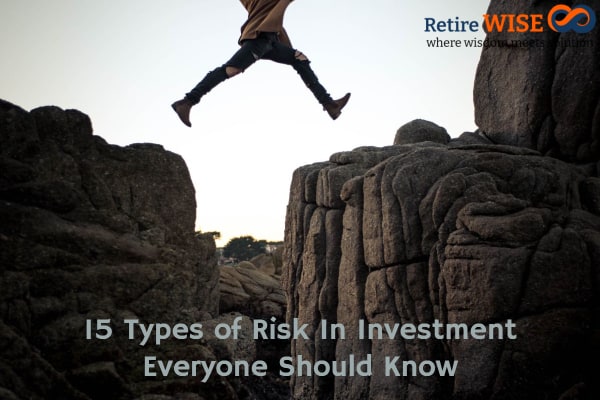
Must Check – 7 Simple Steps To an effective investment strategies for young Investors
Two Most Basic Types of Risks
Investment is related to saving but saving does not mean investment. Investment is about deferring your present consumption for future goals with the expectation of security of amount & getting returns. So there are 2 basic risks in it:
1. Investment Risk
It is about the possibility of losing money. Today you invest Rs 5 lakh in equity & get Rs 4 after 3 years. Investment risk can be measured by Standard Deviation.
2. Inflation Risk
It is losing the purchasing power of money. In 2014 you invest Rs 5 Lakh in debt & get Rs 10 Lakh in 2022. But your Rs 10 Lakh is not able to buy you the item which was available for Rs 4 Lakh in 2014.
Systematic Risk Vs Unsystematic Risk
There is one more way to classify financial risk – is risk will impact the whole economy or a particular company or a sector.
3. Systematic Risk
It is also known as market risk or economic risk or non-diversifiable risk & it impacts the full economy or share market. Let’s say if the interest rate will increases the whole economy will slow down & there is no way to hide from this impact. As such, there is no way to reduce systematic risk other than investing your money in some other country. Beta can be helpful in understanding this.
4. Unsystematic Risk
It affects a small part of the economy or sometimes even a single company. Bad management or low demand in some particular sector will impact a single company or a single sector – such risks can be reduced by diversifying once investments. So this is also called Diversifiable Risk.
Different types of Risk in Investment
We have divided it into 2 parts – risk in debt & other risks. It is a big investment mistake if someone feels that there is no risk in debt investments – people who have ignored this in past have paid a huge price.
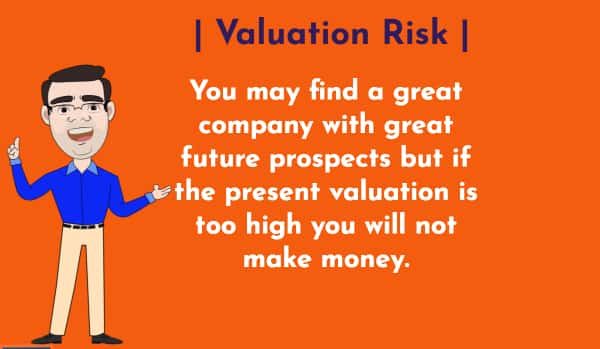
Must Read – ESOP in India
Risk in Debt Investments
5. Credit Risk
It is also called default risk. As the first pic of this article shows that people only look at returns & not risk in it. Let me ask if SBI bank is paying some 9% interest & some NBFC NCD is paying 12.5% – which one you choose. If you think 12.5% NCD will be the right choice – you are ignoring the credit risk. Credit risk is when a company doesn’t have the capacity to pay principal or interest amounts. In past, there is a long list of companies which defaulted like CRB Capital, Escorts, Morpen Labs, etc. Even Bank FDs have credit risk – there is a guarantee only up to Rs 1 lakh. Credit risk is close to zero in Government Bonds.
This is the most common & most important risk in debt – to understand it better read “Why debt will always give negative returns”
Read – You Should Know About Risk and Your Investments
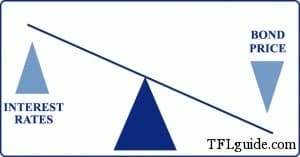 6. Interest Rate Risk
6. Interest Rate Risk

Changes in interest rates will impact the price of bonds. There is a negative relation between the price of bond & interest rates – if the interest rate will increases the price of a bond will go down & vice versa. This risk can be reduced if you hold bonds till maturity. Interest rate risk also affects Bank Fixed Deposit investor – he was having Rs 5 Lakh & he invests at a prevailing rate of 9%. What will happen if the interest rate increase to 10% – he will be losing 1% interest.
7. Reinvestment Risk
Let’s assume that you made an investment in a bond with 9% yearly interest. Interest rate reduced to 7% in 1 year so next year when you received interest & went back to invest it was invested at a lower rate.
8. Liquidity Risk
If you have some bonds that you would like to sell for immediate requirement but there is no buyer or fewer buyers than sellers – you may have to sell your bonds at discount.
9. Country risk
It is also called sovereign risk. As you read in Credit risk “Credit risk is close to zero in Government Bonds” but close to zero doesn’t mean zero. What about the present condition of PIGS – Portugal, Ireland, Greece & Spain. Even in India, there have been instances where fixed deposits issued by govt backed companies deferred maturity payments by issuing additional bonds.
Inflation Risk – as mentioned in starting of the article. Inflation is your biggest enemy.
Must Read – Long Term and Short Term Investments
Other Investment Risks
10. Exchange Rate Risk
If you invest in debt or equity of some other country you will face exchange rate risk. If some of your US investments earn 10% in one year in dollar terms but the same year dollar loses 2% in comparison to rupee – your actual return will be 8%. NRIs are heavily impacted by this risk & they should make financial decisions after considering it.
11. Timing Risk
I don’t think I need to explain it but only one suggestion – don’t take this risk.
12. Volatility Risk
equity prices keep fluctuating on day to day basis. This can be measured by standard deviation.
13. Political Risk or government risk or regulator risk
What will happen if you have invested in a particular sector & government comes out with an adverse policy. This risk can be clearly seen in the sugar or oil & gas sector.
14. Valuation Risk
You may find a great company with great future prospects but if the present valuation is too high you will not make money. Infosys was good company in 2000 & great company in 2005 but its price of 2005 peak was less than 2000.
15. Business Risk & Technology Risk
A couple of years back pagers & typewriters were an important part of once life but these products are no more there. The same happened with Audiotapes & floppies – what would have happened to these companies.
Some Extra Bonus
16. Execution risk
The time between when you see your price and when the trade actually goes to the market.
Must Check – Alternative Investment Funds In India
17. Concentration Risk
When you invest in a single company (I know a person who invested all his long-term savings in Satyam), single fund, or single asset management company you are actually taking a huge risk.
18. Information Risk
This is again a very important risk to understand. You take your financial decisions based on some information – this information is provided either by the manufacturer of financial products or agents/distributors/advisors or media. What will happen if this critical information is wrong or not complete? If you think this only happens at the time of buying insurance – you are absolutely wrong. This can happen in any financial product including mutual fund (you see advertisement of 100% return in a year – these are point to point returns & completely misguiding), taking a loan (interest rate shown 9% but actually it is 16% – it is a game of Flat rate & Reducing rate) or even simple products like tax-free infrastructure bonds.
Someone rightly said “If you torture numbers enough, they will confess to almost anything” – read an extract from Economic Times about IDFC Infrastructure Bond advertisement:
“It is a plain-vanilla infrastructure bond issue that offers tax relief and a modest return to investors. However, the advertisement for IDFC bond offer has investment experts questioning some claims. Most of them claim the advertisement is “grossly confusing”, “misinforming the investors” and “total misrepresentation of facts”.
The bone of contention is IDFC’s claim that the issue offers tax-adjusted yield of 17.85% to investors. Sure, as always, there is an asterisk, and a qualification that the yield is tax adjusted for investors in the highest tax slab. The trouble, some experts say, they can’t verify the claim even after exhausting all financial formulas available in the spreadsheet.”
*(yes this star) – Do you know what this star is called? Asterisk or Aster-RISK – Aster means Star & Risk means anything or everything that is written in this article. If you find this star somewhere try to find hidden things in footnotes.
There are few other types of risk that impact you directly or indirectly – institutional risk, operational risk, event & company risk, geopolitical risk, sociopolitical risk, counter-party risk, reputation risk, commodity risk, management risk, principal & opportunity risk, prepayment risk, call risk, legal risk and I am sure I have missed lot others….
Oh, so many risks & you thought only equities are risky. Now from the next time when you say Risk-Free Investment – first clarify which risk you are referring to.


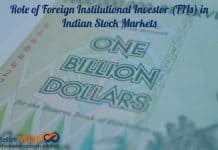

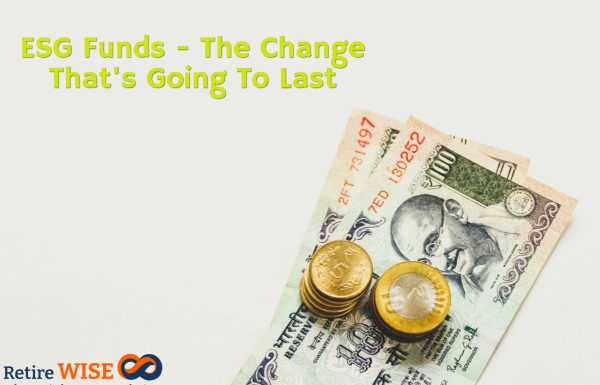









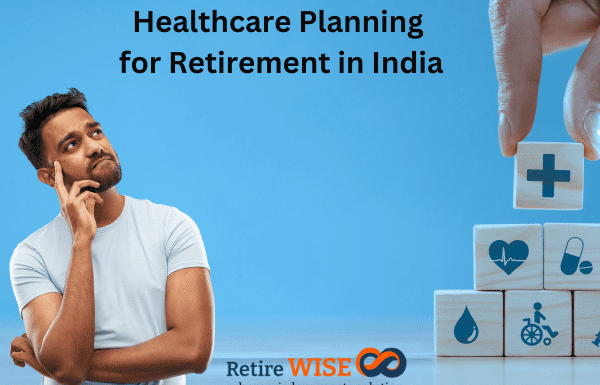









superb article with perfect timing….yesterday itself I was thinking to ask you, what does it mean when people say that don’t purchase ABC shares, that is “risky”. UK market is not doing good etc etc… So what risk they are talking about….
After reading this article I have a query in my mind that how could a common man who is not well versed with financial manipulations can invest his hard earned money?
Hi Saurav,
These risks can be reduced with some strategy but a zero risk solution is next to impossible.
Excellent article. I like it very much
Thanks 🙂
Another good article. The biggest risk in life is not taking a risk. but of course, it should be informative risk where you have idea about your risk taking capability, potential upside/downside of investments and patience, conviction to stay invested in volatile incidents.
Hi Jagbir,
Fully agree with this “The biggest risk in life is not taking a risk.” If you take calculated risk & still loose – you gain wisdom. 😉 But every financial decision one take should be backed by proper logic/reasoning & not intuitions.
Excellent post – Every investments is subject to one risk or the other !
Yes & its really important to talk about risk with potential/expected returns.
A good research and truth regarding the investment & actual point to be keep in mind before investing and comparing the market inflation and risk element with your investment products
Thanks Anup.
Hi Hemant
Most of the investors want to know about an investment which will give them maximum returns without mentioning anything about their risk appetite. They don’t understand that risk and return are closely related. A person with a low risk appetite should not expect high returns from his investments.
Hi Anil,
Investors need to understand what you have written here.
People need to taste risk before eating returns.
Wow!
A well written article. I can never imagine all these risk in various investments.
Thanks to aware me about this.
Umesh
Hi Umesh,
So next time before investing – ask your agent what are risk associated with the product. If he say NO Risk – share link of this article with him. 🙂
Hi Hemant , Excellent article .
it should be informative risk where you have idea about your risk taking ability. Conclusion is” NO PAIN NO GAIN” It is biggest Risk to invest in Mkt. without know such above “RISKS”
Hi Dinesh,
You right said “NO PAIN NO GAIN” as the quote is “But he that dares not grasp the thorn Should never crave the rose.”
hi Hemant , excellent article …..I think most of the common investor in India are taking calculated risk by mixing insurance with investment and end it up by getting 4 to 5 %return of their hard earned money…LIC is the biggest investment avenue for them…they just want to get some return from their investment…this type of mentality prevent them to get themselves adequately insured by term plan…when it comes to health insurance, most of the people think that they dont require health insurance and by not opting this they are taking dual risk-i) health related risk & ii) investment risk…they think investment in mutual fund is very risky hence they keep thousand mile distance from this…I dont agree with the sentence”the biggest risk in life is not taking risk”…they are taking heavy risk by investing in insurance….
Hi Dr Koushik,
I don’t agree that “common investor in India are taking calculated risk by mixing insurance with investment” – I think they do because the don’t understand even basics. 🙁
Good article..we should know what we are getting into? Avoiding risk is no solution as “The person who risks nothing, does nothing, has nothing, is nothing, and becomes nothing. He may avoid suffering and sorrow, but he simply cannot learn and feel and change and grow and love and live.
The Aster-risk was cherry on the top of cake.
But everyone does not have the same temperament or would like to take same risk. Giving an analogy: Some like thrill of T20 and some like the gentlemanly Test match. We need to understand ourselves and how much we can take.
And risk taking capability also changes with age. A person in 20’s risk taking capability is different from that of 55 year old.
So debt might be risk free or have less risk and equity to be more risky..but one needs to take a calculated risk..
Hemant,
Really Nice article.
Dr Jaan Sidorov presents this week’s collection of risky, often scary posts.
Please tell your readers.
While it’s not mandatory to give a link back, it’s the way that carnivals work best. Please remember to post about it on your blog because it helps us all.
Thanks!
Dear Mr Hemant,
I have read your articles on TFL guide. They are really helpful to me in planning my goals. Sir, i have some queries regarding my current investments, please suggest if they are good or i need to withdraw.
1. HDFC SL CREST –premium(50000/-) jave paid one premium & about to pay second.
2. Kotak mahindra super advantage (30000/-) yearly. paid 2.
Please put some light on these investment.
Regards
Yashu Handa
Dear Mr Hemant,
I have read your articles on TFL guide. They are really helpful to me in planning my goals. Sir, i have some queries regarding my current investments, please suggest if they are good or i need to withdraw.
1. HDFC SL CREST –premium(50000/-) jave paid one premium & about to pay second.
2. Kotak mahindra super advantage (30000/-) yearly. paid 2.
Please put some light on these investment.
Regards
Yashu Handa
Hi Yashu,
Both of these policies are investment relates & are really expensive. HDFC SL Crest is Highest NAV guaranteed fund – which was understood by investors as Highest Return guaranteed fund. Once the earlier products expired, Irda did not approve any new product based on the highest NAV. The insurance regulator is not comfortable with the way these products are being pitched to customers. Problem is – these products are not expected to do as well as simple equity oriented schemes, since insurers tend to invest substantial amounts in debt. My suggestion is go & sit with your agent and discuss this.
hi,
nice article
Thanks
I had invested Rs/20000 in UTI DIVIDEND YIELD FUND past year,
is it a good fund or shall i switch off?
hi every body. i wanna use this article and i need name of the writer of it and the refrences. can you help me?
Hi Salar,
This article is written by me – in case if you wish to publish this article contact me on [email protected]
all the articles are very much to understand. Beniwal ji u have excellent knowledge of market and risk factors.
Thanks Shailesh.
Hi Hemant,
Excellent article.
Good example of Regulator Risk is what a beating Indraprastha Gas has taken yesterday because of regulatory dispension
Regards,
Sudhir Goyal
Wooh this was very exiting. It taught me the different types of risk that i can face when investing. Good work
Thanks Margaret 🙂
Comments are closed.